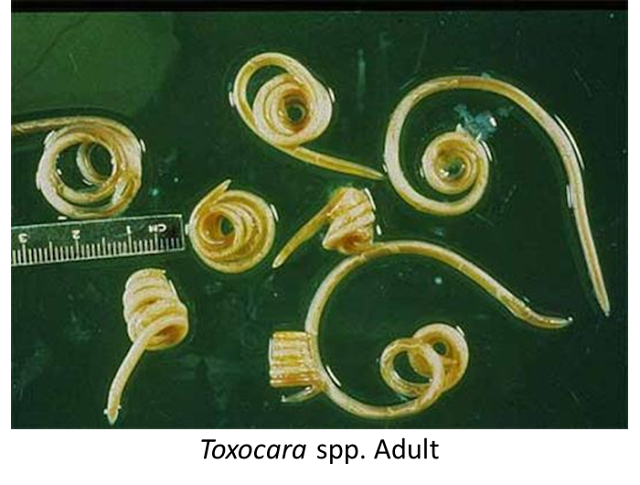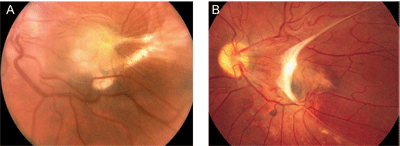A Danger in Your Home-Be Smart and Treat-Eliminate this Zoonosis!
- Get link
- X
- Other Apps
www.SilverSandsVeterinary.blogspot.com
Donald H. DeForge, VMD
www.SilverSandsVeterinary.com
DonDeForge100@gmail.com
A Danger in Your Home-
Be Smart and Treat
Eliminate the Zoonosis
23March2017
Toxocariasis:
Last year--- I published an article on the danger of Roundworm in dogs and cats as a zoonosis.
It was the most read Blog on 2016. I bring it back in 2017.
From the Companion Animal Parasite Council:


From the Companion Animal Parasite Council:
Control and Prevention
- Puppies and kittens should be routinely dewormed beginning at 2 weeks of age, with deworming repeated every 2 weeks, until the animals are four to eight weeks of age and placed on a monthly product with efficacy against ascarids.
- To treat potential newly acquired infections, dogs and cats should be maintained on monthly intestinal parasite control products with efficacy against ascarids.
- Efficacy of the initial dewormings, monthly control product, and client compliance should be monitored by performing a fecal examination 2 to 4 times in the first year and 1 to 2 times per year thereafter, depending on the age of the animal and its prior history of infection.
- Prevention of predation and scavenging activity by keeping cats indoors and dogs confined to a leash or in a fenced yard will limit the opportunity for cats and dogs to acquire infection with ascarids via ingestion of vertebrate hosts or from an environment contaminated with feces from untreated animals.
- Prompt removal of feces from the yard or the litterbox will also help prevent ascarid eggs from remaining in the environment as the fecal material decomposes or is dispersed.
- Enforcing leash laws and requiring owners to remove feces deposited by their dogs can protect public areas from contamination with ascarid eggs.
Public Health Considerations
- Toxocara spp. are well-documented and important zoonotic disease agents. Infection with Toxocara spp. is most common in children and occurs upon ingestion of larvated eggs from a contaminated environment following dirt eating or other forms of pica. Although all children are susceptible to infection, some studies have shown that toxocariasis is more common in both rural and inner-city areas, and is associated with poverty and contact with breeding and/or untreated, free-roaming dogs.
- Larvated eggs of Toxocara spp. are commonly found in soil collected from playgrounds or parks, and the eggs survive and remain infective for many years. When these eggs are ingested, the larvae they contain migrate internally in the child, resulting in disease.
- Syndromes of toxocariasis include visceral larva migrans, which is usually characterized by hepatomegaly, pulmonary disease, and eosinophilia; neural larva migrans, characterized by progressive neurologic disease; ocular larva migrans, characterized by a unilateral granulomatous retinitis; and covert toxocariasis, in which chronic abdominal pain or other nonspecific symptoms develop.
- Prevention of disease caused by infection with zoonotic ascarids requires preventing the ingestion of eggs from the environment. Young children should be closely monitored so that dirt eating and other forms of pica can be discouraged, particularly in public areas known to be frequented by dogs and cats.
- Early and regular deworming is essential in preventing contamination of the environment with Toxocara eggs. Treating pets to prevent egg shedding is critical because the eggs are very hardy and long-lived in the environment. Once present, the eggs can be removed or destroyed only through extreme measures such as paving kennel areas or areas of pet defecation with concrete or asphalt, complete removal of topsoil, prescribed burns, or treatment with steam.
What is Toxocariasis?
Toxocariasis is an infection transmitted from animals to humans (zoonosis) caused by the parasitic roundworms commonly found in the intestine of dogs (Toxocara canis) and cats (T. cati).
Who is at risk for Toxocariasis?
Anyone can become infected with Toxocara. Young children and owners of dogs or cats have a higher chance of becoming infected.
Approximately 13.9% of the U.S. population has antibodies to Toxocara. This suggests that tens of millions of Americans may have been exposed to the Toxocara parasite.
How can I get Toxocariasis?
Dogs and cats that are infected with Toxocara can shed Toxocara eggs in their feces. You or your children can become infected by accidentally swallowing dirt that has been contaminated with dog or cat feces that contain infectiousToxocara eggs. Although it is rare, people can also become infected from eating undercooked meat containing Toxocara larvae.
What are the clinical manifestations of Toxocariasis?
Many people who are infected with Toxocara do not have symptoms and do not ever get sick. Some people may get sick from the infection, and may develop:
- Ocular toxocariasis: Ocular toxocariasis occurs when Toxocara larvae migrate to the eye. Symptoms and signs of ocular toxocariasis include vision loss, eye inflammation or damage to the retina. Typically, only one eye is affected Ocular Larva Migrans
- Ocular Toxocariasis
How serious is infection with Toxocara?
In most cases, Toxocara infections are not serious, and many people, especially adults infected by a small number of larvae (immature worms), may not notice any symptoms.
The most severe cases are rare, but are more likely to occur in young children, who often play in dirt, or eat dirt (pica) contaminated by dog or cat feces.
How is Toxocariasis spread?
The most common Toxocara parasite of concern to humans is T. canis, which puppies usually contract from the mother before birth or from her milk. The larvae mature rapidly in the puppy's intestine; when the pup is 3 or 4 weeks old, they begin to produce large numbers of eggs that contaminate the environment through the animal's feces. Over a 2 to 4 week time period, infective larvae develop in the eggs. Toxocariasis is not spread by person-to-person contact like a cold or the flu.
What should I do if I think I have Toxocariasis?
See your health care provider to discuss the possibility of infection and, if necessary, to be examined. Your provider may take a sample of your blood for testing.
What is the treatment for Toxocariasis?
Visceral toxocariasis is treated with antiparasitic drugs. Treatment of ocular toxocariasis is more difficult and usually consists of measures to prevent progressive damage to the eye.
How do I prevent Toxocariasis?
- Take your pets to the veterinarian to prevent infection with Toxocara. Your veterinarian can recommend a testing and treatment plan for deworming.
- Wash your hands with soap and water after playing with your pets or other animals, after outdoor activities, and before handling food.
- Teach children the importance of washing hands to prevent infection.
- Do not allow children to play in areas that are soiled with pet or other animal feces.
- Clean your pet's living area at least once a week. Feces should be either buried or bagged and disposed of in the trash. Wash your hands after handling pet waste.
- Teach children that it is dangerous to eat dirt or soil.
Supplemental Material:
- Visceral larva migrans:
- Occurs mostly in preschool children.
- The larvae invade multiple tissues and clinical features include fever, anorexia, abdominal pain, weight loss, cough, wheezing, pleural effusion, hepatosplenomegaly, urticaria, subacute meningitis/encephalitis, seizures, monoarthritis, cutaneous vasculitis, myocarditis and hypereosinophilia.
- Death (from severe cardiac, pulmonary or neurological involvement) may occur but is rare.
- Prevent the transmission of intestinal ascarids from pets to people.
- Avoid environmental contamination by emphasizing good hygiene.
- Excellent sanitation and providing well-timed preventive treatment especially for pups and kittens.
Zoonotic:
Pertaining to a zoonosis: a disease that can be transmitted from animals to people or, more specifically, a disease that normally exists in animals but that can infect humans. There are multitudes of zoonotic diseases.
Toxocariasis is a serious zoonosis!
With properly scheduled laboratory testing of the feces and a routine deworming program, the Toxocariasis zoonosis will never affect your pet or family.
Call your pediatrician if you feel your child has handled or eaten feces or dirt. Call your pediatrician if you feel your child has contacted the pet's anal area or is playing with their toys or pet toys that could be contaminated with feces.
Keep your pediatrician informed of any positive fecal reports for Roundworm in your pet or other parasites found in the feces by your doctor of veterinary medicine.
Remember a lab test saying "no parasites seen" in your pet is not a statement of no parasites in your pet. It just means no parasites were found in the sample tested. Routine deworming programs should be set up through the intercession of your local doctor of veterinary medicine in all pets with positive lab reports or "none seen reports" as part of a routine parasite prevention program.
Dr. DeForge accepts comments on his blog at DonDeForge100@gmail.com
Silver Sands Veterinary Center and Milford Veterinary Hospital
17 Seemans Lane Milford, CT 06460
- Get link
- X
- Other Apps





Comments
Post a Comment